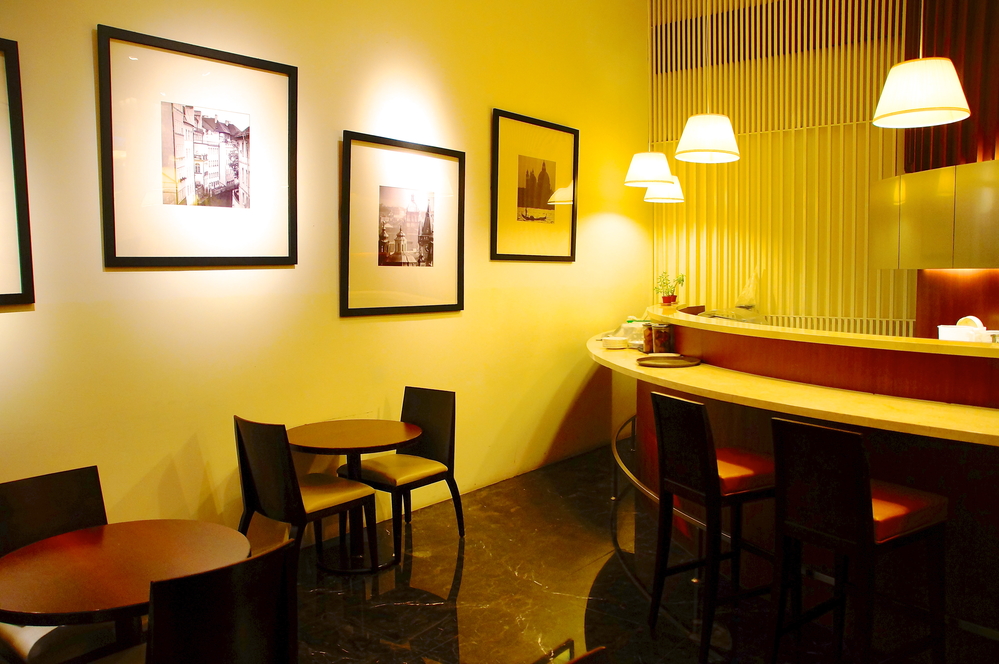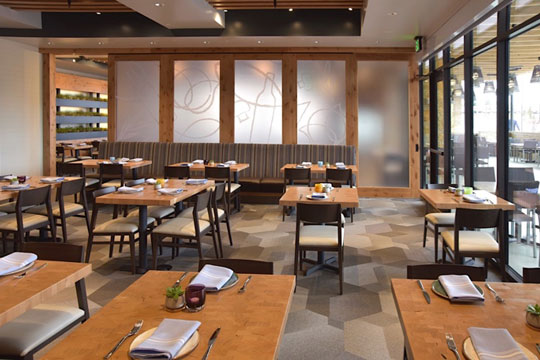Pan Asian Dining Islamabad: Appreciate Genuine Asian Recipes
Pan Asian Dining Islamabad: Appreciate Genuine Asian Recipes
Blog Article
Savor Genuine Asian Cuisine With a Pan-Asian Twist for a Cooking Journey
Beginning on a cooking trip through genuine Asian cuisine, improved with a Pan-Asian spin, offers an one-of-a-kind chance to check out the rich tapestry of flavors that define the area's diverse cooking traditions. As you contemplate these tempting recipes, think about the cultural stories and historic impacts that form them, each bite offering a story waiting to be found. Chinese food Islamabad.

Checking Out Pan-Asian Flavors
In the world of worldwide gastronomy, Pan-Asian cuisine stands apart for its impressive variety and the harmonious interaction of tastes from numerous Oriental cultures. This culinary strategy commemorates the rich practices and special components discovered throughout the continent, creating a tapestry of preferences that is both gratifying and interesting. Secret to Pan-Asian cuisine is its capability to balance contrasting flavors-- pleasant, salted, spicy, and sour-- while highlighting the freshness and top quality of each component.
From the umami-rich soy sauce of Japan to the intense chili peppers of Thailand, Pan-Asian cuisine offers an extensive palette of tastes. These components are typically incorporated in creative ways, boosting meals with layers of intricacy. For circumstances, using great smelling herbs such as lemongrass and cilantro, usual in Vietnamese and Thai cuisine, includes a revitalizing brightness to dishes, while the unification of coconut milk provides a creamy, abundant texture.
The focus on fresh produce and fragrant seasonings makes certain that each dish is not just a feast for the taste buds yet likewise for the senses. Pan-Asian cuisine welcomes restaurants to start a culinary journey, exploring the large and varied landscapes of Oriental gastronomy with every bite.
Combination Recipes to Attempt
While Pan-Asian food is commemorated for its typical tastes, the modern culinary landscape is significantly accepting fusion recipes that blend these classic elements with influences from other areas. This ingenious approach not only honors the rich heritage of Eastern culinary arts yet likewise presents novel taste experiences that attract modern tastes buds.
An archetype of such a fusion dish is the Korean-Mexican taco, where marinated bulgogi beef is covered in a cozy tortilla, topped with kimchi and a zesty gochujang-infused salsa. This combination weds the vibrant, savory tastes of Korea with the vivid, fresh elements of Mexican food. Likewise, sushi burritos have actually obtained appeal, joining together the delicate artistry of Japanese sushi with the hearty, hand-held comfort of a burrito, usually featuring blend active ingredients like tempura shrimp and avocado with a drizzle of wasabi mayo.
One more noteworthy recipe is Thai curry ramen, which infuses the luscious, aromatic flavors of Thai curry into the comforting broth of traditional Japanese ramen, developing an unified mix that entices the detects. These combination dishes prolong past mere uniqueness; they represent a cooking dialogue in between societies, encouraging expedition and technology in the globe of Pan-Asian food.
Essential Ingredients and Seasonings
To really appreciate Pan-Asian cuisine, one need to comprehend the vital components and seasonings that develop its structure. This varied cooking design draws from an abundant tapestry of Eastern practices, using a harmonious mix of appearances and flavors. Key active ingredients include soy sauce, fish sauce, and oyster sauce, which present a tasty umami deepness vital to Oriental meals. Complementary to these are rice vinegar and mirin, offering a fragile acidity and sweet taste.
Aromatic elements are critical, with garlic, lemongrass, and ginger being ubiquitous across various Pan-Asian dishes. These ingredients provide an aromatic base that enhances the intricacy of tastes. Spices such as star anise, cardamom, and cinnamon present heat and personality, resembling impacts from regions like China and India.

Food Preparation Methods and Tips
Mastering the art of Pan-Asian cuisine calls for experience with its unique cooking strategies, each adding to the vibrant tapestry of tastes this culinary practice is get more celebrated for. Central to these approaches is the stir-fry, a quick cooking strategy that preserves the dietary stability and dazzling shades of components. Making use of a wok, the stir-fry technique allows for also heat distribution, important for accomplishing the characteristic structure and taste equilibrium of Pan-Asian dishes.
Another basic method is steaming, particularly widespread in Chinese food. This mild technique maintains the all-natural flavors and nutrients of active ingredients, making it excellent for fish and shellfish and veggies. Dumplings, a beloved staple, often gain from steaming, resulting in soft, succulent textures.
Grilling, additionally essential, imparts smoky depths to dishes such as Korean bulgogi or Japanese yakitori (Best ambiance restaurants Islamabad). This technique frequently entails seasoning ingredients, allowing tastes to penetrate deeply before food preparation over an open fire or warmer
Finally, understanding the art of balancing tastes-- pleasant, sour, salted, bitter, and umami-- ethiopian restaurant near me is essential. Effectively layering these aspects can elevate a recipe from common to phenomenal, using a complex and satisfying cooking experience that symbolizes the significance of Pan-Asian cuisine.
Dining Experiences Worldwide
Around the world, Pan-Asian food provides an unrivaled eating experience, celebrated for its rich tapestry of flavors and vivid presentations. This culinary phenomenon has gone beyond cultural borders, catching the hearts and tastes of food fanatics worldwide. In multicultural cities like New York, London, and Sydney, Pan-Asian restaurants function as melting pots where cooking customs from Thailand, Japan, China, and beyond merge, providing restaurants with a diverse mix of recipes that highlight the area's diversity.
The global appeal of Pan-Asian food depends on its capability to offer both authenticity and technology. Cooks masterfully marry standard components such as lemongrass, soy sauce, and miso with contemporary techniques, causing recipes that are both refreshingly new and acquainted. This fusion permits diners to start a culinary journey that appreciates heritage while welcoming modernity.
Additionally, dining experiences are boosted with thoughtfully created atmospheres that reflect the values of Pan-Asian aesthetic appeals. From minimal Japanese-inspired insides to vivid Thai-themed areas, each restaurant uses a special setting that complements the cooking offerings. Consequently, patrons are not merely consuming a meal however partaking in a cultural experience, making Pan-Asian dining a really international phenomenon.
Conclusion
The exploration of Pan-Asian cuisine provides a profound understanding of the detailed interplay of flavors and culinary practices across Asia. By embracing blend meals such as Thai curry ramen and sushi burritos, the cooking trip not just highlights the flexibility of traditional ingredients yet also showcases cutting-edge modern-day techniques. This gastronomic adventure, improved by essential spices and cooking methods, supplies an unique opportunity to value the multiculturalism and cooking creativity that specify Pan-Asian food on an international scale.
Beginning on a culinary journey through genuine Oriental cuisine, improved with a Pan-Asian spin, supplies an unique possibility to check out the rich tapestry of flavors that specify the region's diverse culinary traditions.In the world of worldwide gastronomy, Pan-Asian cuisine stands out for its impressive variety and the harmonious interaction of flavors from various Asian cultures. Secret to Pan-Asian cuisine is its ability to balance different flavors-- wonderful, salted, spicy, and sour-- while highlighting the quality and top quality of each active ingredient.

Report this page